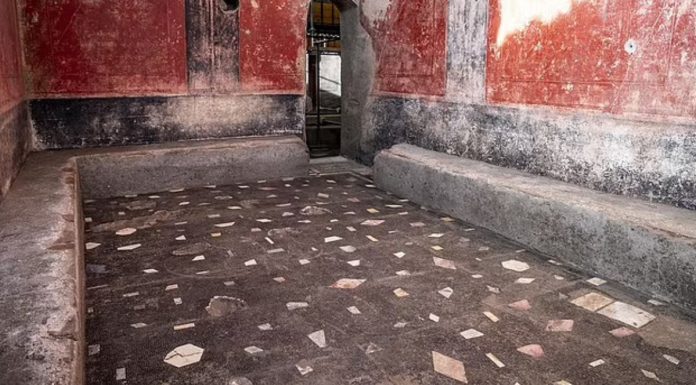Archaeologists have recently discovered in Pompeii, probably the largest private bath complex, which was part of the luxurious house of a rich Roman. This discovery makes it possible to understand more deeply the way of life of the ancient Romans to the catastrophic eruption of the Vesuvius volcano in the 79th AD, which destroyed the city.
This bath complex, consisting of several premises, could accommodate up to 30 people and was located in a private house, which was probably a very influential and wealthy person. Archaeologists believe that this spa complex is the highest level of luxury for the time that was available only to the richest inhabitants of Pompey. The complex includes three rooms with swimming pools: Caldarium (hot room), a heat melt (warm room) and a frigidarium (cold room). Each of the rooms was impressively decorated with murals. The hot room, similar to the sauna, made it possible to spend time in the heat, then the visitors moved to a warm room, where they were probably rubbed with oil into the skin, and then - to a cold room with a large pool, which could relax up to 30 people. In addition, the bath complex was connected to a luxurious banquet hall, the walls of which are decorated with murals depicting scenes from the Trojan War. Scientists believe that this bath complex not only served as a place for relaxation, but also used to receive high -ranking guests, probably in hospitality and political support. Guests could rest after a majestic banquet in the ancient spa, which allowed the owner to demonstrate their status and well-being. Interestingly, archaeologists also discovered the remains of two people who tried to escape after the eruption of Vesuvius, barked in a small room. However, the man died through the collapse of the wall, and the woman from the stream of hot bench.
This discovery adds another important testimony to the luxury and lifestyle of the rich inhabitants of Pompey before the tragic catastrophe.


